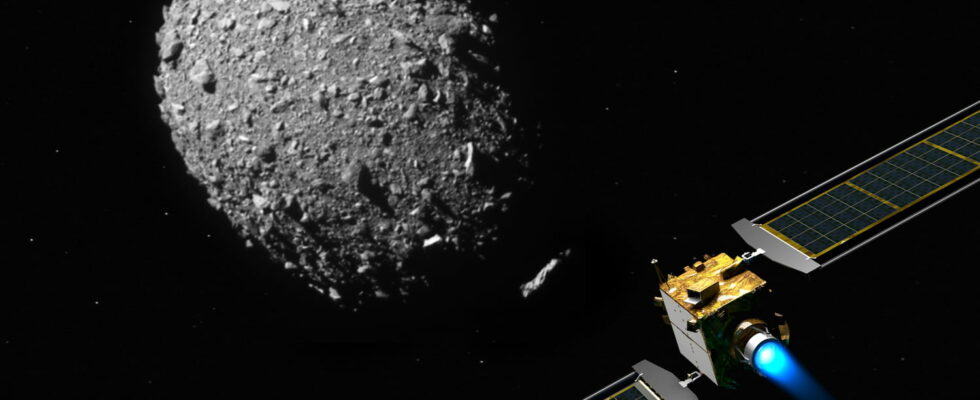The European Space Agency is preparing to launch the HERA probe which is to study the asteroid struck by NASA in 2022. The results obtained could play a crucial role in protecting the Earth from this threat from the sky.
Orchestrated by the European Space Agency (ESA), the HERA mission should take off on Monday October 7 aboard a Falcon 9 rocket from SpaceX. His goal? Study the Dimorphos asteroid that NASA deliberately hit in 2022. Despite its science fiction appearance, this program could indeed one day help save humanity.
It all started in 2022 when NASA’s DART probe took off towards Dimorphos, an asteroid located 11 million kilometers from Earth. After 10 months of travel, the probe hit the asteroid as planned, which had the consequence of deviating its trajectory. Challenge met for the American Space Agency which had thus achieved a great first and marked an important step in our ability to protect the Earth in the face of the threat posed by asteroids. This is where the ESA and its HERA probe intervene, which will have the mission of studying in more detail the consequences of this collision and the characteristics of the asteroid.

Initially, the HERA probe should have reached the asteroid in 2022 before DART collided with it to witness the collision in real time. To do this, she had to take her place aboard the European Ariane 6 rocket which, after successive delays, only finally made its first flight last July. But this setback should not have any consequences on the analyzes that the probe will carry out on the asteroid. The latter should in particular study the crater thus created on the surface of the space object. Equipped with twelve different instruments, the probe carries with it two drones which will be able to fly over the area at very low altitude and even land on the surface of the asteroid to take precise measurements.
With an expected arrival in 2026, the probe should take around two years to reach its destination. The results it provides will be of crucial importance in the future since they will provide a better understanding of the formation and composition of asteroids that can potentially threaten Earth. Although today no object of this type appears dangerous for the Earth, we only know a tiny portion of the asteroids that evolve around us. Anticipating such an encounter is therefore a decisive issue for planetary defense.
